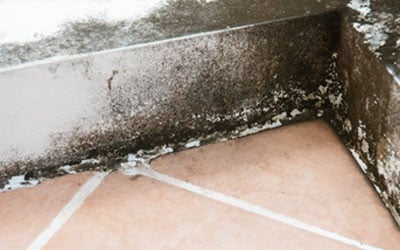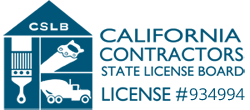
Mold can be more than just an eyesore; it’s a potential health hazard that can make your living space unsafe. The presence of mold often indicates underlying issues with moisture or ventilation that need immediate attention. Knowing how to spot mold early and what to do about it can save you from more extensive damage and costly repairs down the line.
Mold is a type of fungus that thrives in damp, humid environments, and it can grow on a variety of surfaces, including walls, ceilings, and even fabrics. Recognizing the common signs of mold in your home is crucial for taking timely action. From discoloration to musty odors, these signs can help you identify problem areas before mold spreads too far.
Addressing mold problems involves more than just cleaning the visible spots. You need to understand the health risks associated with mold exposure, as well as the steps required for safe removal. Additionally, putting preventive measures in place can help keep mold at bay, ensuring a healthy environment for you and your family. Let’s dive into the details of how to spot mold and what you can do to manage it effectively.
Common Signs of Mold in Your Home
Mold isn’t always easy to spot, but knowing the common signs can help you catch it early. Here are a few indicators that you might have a mold problem in your home.
- Musty Odor: One of the most recognizable signs of mold is a persistent musty smell. Even if you can’t see any mold, the smell can give away its presence, especially in hidden areas like behind walls or under carpets.
- Visible Mold Growth: Mold can appear in various colors such as black, white, green, or even orange. It often looks like spots or patches on surfaces like walls, ceilings, or tile grout.
- Water Stains: Discoloration on walls or ceilings can indicate water damage, which often leads to mold growth. Yellow, brown, or even black stains are common signs.
- Peeling or Bubbling Paint: Moisture trapped behind walls can cause paint or wallpaper to peel or bubble. This is a potential breeding ground for mold.
- Condensation: Excessive condensation on windows, pipes, or walls can create the right environment for mold to thrive. If you notice frequent condensation, check nearby surfaces for mold.
Regularly inspect these areas and pay attention to these signs. Catching mold early can help you address the issue before it becomes a bigger problem.
Health Risks of Mold Exposure
Mold isn’t just unsightly; it can also pose serious health risks. Understanding these risks can motivate you to take swift action if you find mold in your home.
Allergic Reactions: Mold can cause allergic reactions, especially in people who are sensitive to it. Symptoms include sneezing, runny nose, red eyes, and skin rashes. These reactions can be more severe in people with existing allergies or asthma.
Respiratory Issues: Inhaling mold spores can irritate your lungs and airways. This can lead to symptoms like coughing, wheezing, and difficulty breathing. Long-term exposure can worsen asthma and even lead to chronic respiratory conditions.
Infections: While rare, mold can cause infections, particularly in people with weakened immune systems. These infections can be more serious and may require medical treatment.
Toxic Mold: Certain types of mold, like black mold, produce mycotoxins that can be harmful if inhaled. Exposure to these toxins can cause neurological symptoms like headaches, dizziness, and even cognitive impairment.
Understanding these health risks underscores the importance of addressing mold issues promptly. Removing mold and taking steps to prevent it can help ensure a healthier living environment for you and your family.
Steps to Take If You Find Mold
Finding mold in your home can be alarming, but knowing the right steps to take can help you manage the situation effectively. Here are the actions you should follow if you discover mold:
- Confirm the Mold: Before taking any action, confirm that what you’re seeing is indeed mold. Mold can appear in various colors and textures. If it’s fuzzy or has a musty smell, it’s likely to be mold.
- Protect Yourself: Wear protective gear like gloves, a mask, and goggles to avoid direct contact with mold spores. These can prevent skin contact and inhalation of harmful spores.
- Contain the Area: Close off the room where the mold is located to prevent spores from spreading to other parts of the house. Use plastic sheeting to seal off doorways and openings.
- Remove Affected Items: Dispose of porous materials like drywall, ceiling tiles, and soft furnishings that have mold. Place them in sealed plastic bags to prevent spores from escaping during disposal.
- Clean Hard Surfaces: Scrub non-porous surfaces with a mixture of water and detergent. Use a stiff brush for stubborn patches. Follow up with a disinfectant to kill any remaining spores.
- Dry the Area: Thoroughly dry the cleaned area using fans and dehumidifiers. Mold thrives in damp environments, so it’s crucial to remove any excess moisture.
- Inspect and Monitor: After cleanup, regularly inspect the area for signs of mold regrowth. Keep the area dry and well-ventilated to prevent mold from returning.
Taking these steps will help you deal with mold effectively, ensuring your home remains safe and healthy.
Preventive Measures to Keep Mold Away
Preventing mold from gaining a foothold in your home involves committing to regular maintenance and mindful practices. Here are several strategies to keep mold away:
- Control Humidity: Keep indoor humidity levels below 60%. Use dehumidifiers in damp areas like basements and bathrooms. Air conditioners can also help manage humidity levels throughout your home.
- Ventilate Properly: Ensure proper ventilation in moisture-prone areas. Use exhaust fans in bathrooms and kitchens to reduce moisture buildup. Opening windows can also improve air circulation.
- Fix Leaks Promptly: Address any water leaks from roofs, windows, or pipes immediately. Repairing leaks quickly prevents moisture accumulation, which can lead to mold.
- Use Mold-Resistant Products: When renovating, opt for mold-resistant drywall and paint, especially in areas prone to moisture. These materials can help reduce the chance of mold growth.
- Maintain Cleanliness: Regularly clean and disinfect surfaces. Mold spores can settle on dust and grime, so keeping your home clean helps minimize the risk of mold formation.
- Monitor Indoor Plants: Overwatering indoor plants can create a damp environment conducive to mold growth. Use well-draining soil and don’t let water accumulate in trays.
- Check Ventilation Systems: Ensure that heating, ventilation, and air conditioning (HVAC) systems are clean and functioning properly. Change filters regularly and ensure vents are unobstructed.
Implementing these preventive measures can significantly reduce the risk of mold in your home. Taking proactive steps will help create a safer, healthier environment.
Conclusion
Spotting and dealing with mold in your home is crucial for maintaining a healthy living environment. By knowing the common signs of mold and understanding the health risks associated with exposure, you can take timely and effective steps to tackle the problem. Addressing mold issues promptly, using safe removal methods, and taking preventive measures will help keep your home free from harmful mold growth.
Regular inspections and diligent maintenance can make a big difference in preventing mold and ensuring your home stays safe and comfortable. If you find yourself overwhelmed or unsure how to handle mold, don’t hesitate to seek professional help.
For expert assistance with mold removal and prevention, contact Restoration Masters. We have the expertise and tools needed to address all your mold concerns and ensure your home remains a healthy place. Call Restoration Masters today for professional mold remediation services.





